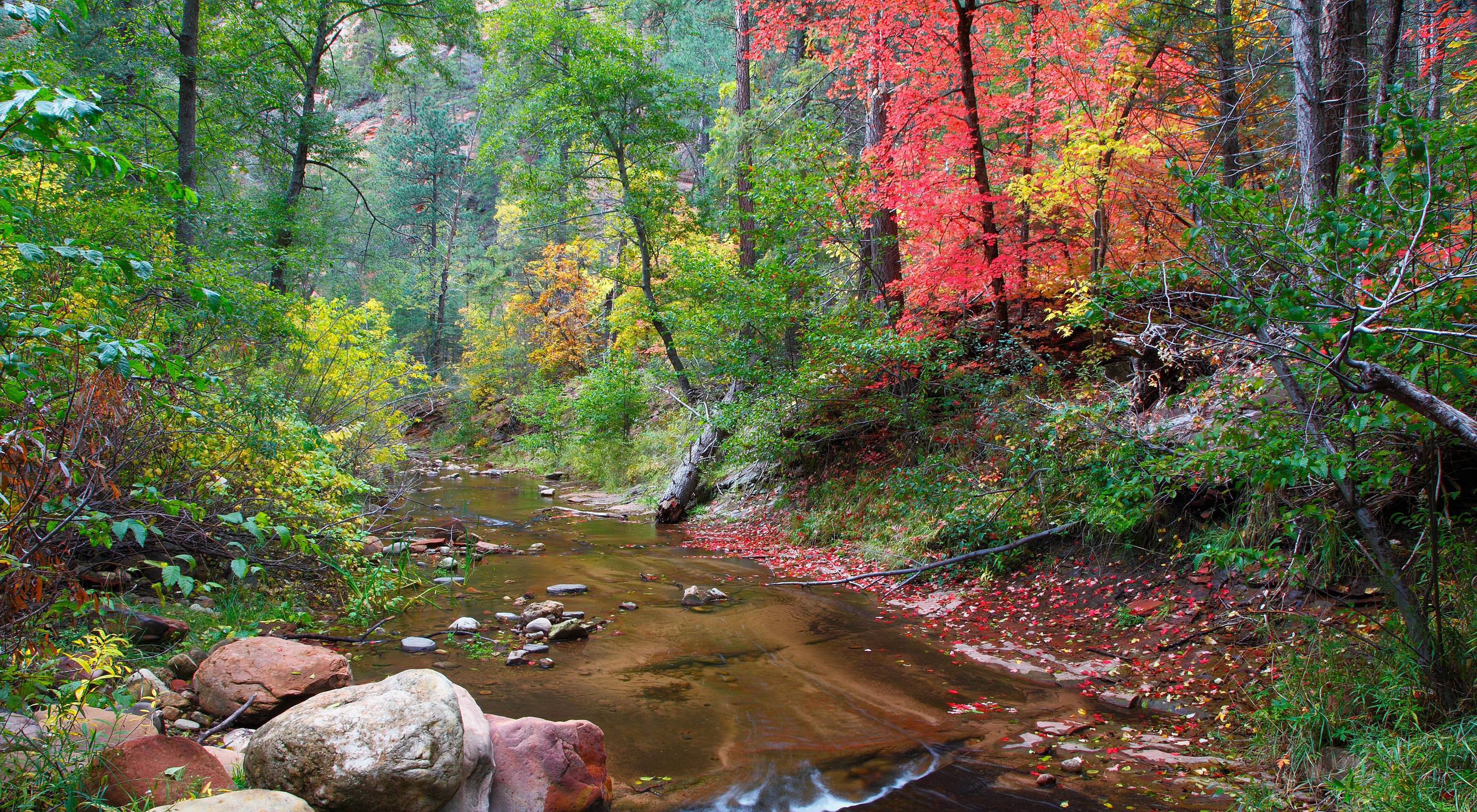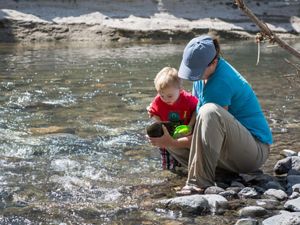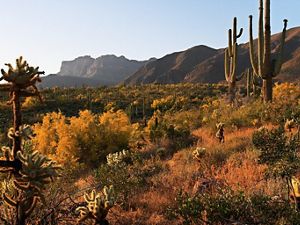New Forest Study Briefs
- In 2023, the industry supporting forest restoration activities in the Four Forest Restoration Initiative (4FRI) landscape in northern Arizona brought an impressive $216M of economic impact to the region. Read more
- Science data drives innovation for streamlining forest restoration project layout practices on the Walker Hill Demonstration project. Learn about these remarkable results, demonstrating that digital based layout methods not only provide comparable outcomes to conventional Leave Tree Marking (paint), but are also 5x faster and 10x less expensive. Read more
Northern Arizona’s lush grasslands and towering pines form a rare, 3-million-acre ponderosa pine forest. For over 20 years, we’ve worked to safeguard this natural treasure from wildfires, protect communities and sequester carbon. Now, we’re taking our efforts to new heights.

Forests: Our Lifeline
Forests are vital to everyone, no matter where you live. They play a crucial role in water filtration, ensuring clean water flows into our rivers and lakes. By storing carbon and helping to regulate temperature and precipitation, forests help mitigate climate change, making our planet more livable. They also improve air quality by absorbing pollutants and producing oxygen. Beyond these, forests support a wide variety of life, providing homes for countless species of plants and animals while also offering recreational spaces for outdoor activities like hiking, camping and birdwatching.
Restoring an acre of forest not only brings these benefits back but also ensures the longevity and health of our forests for future generations.
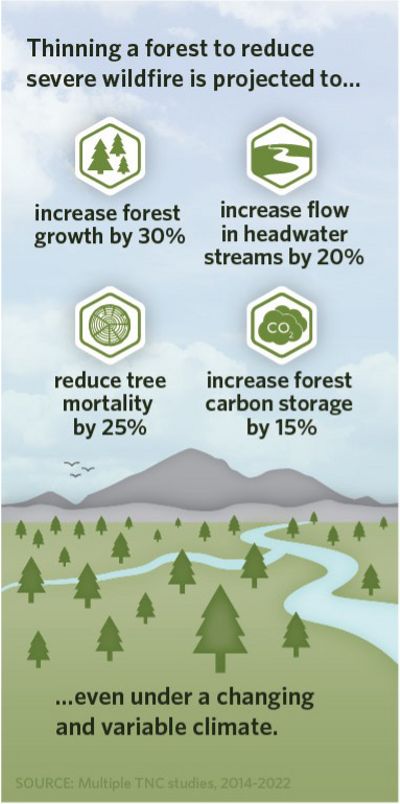
Comprehensive Forest Restoration
Forest restoration is not a one-size-fits-all solution. It requires diverse and adaptive strategies aimed at identifying and prioritizing the areas where we can make the greatest impact.
Protecting Ecosystem Services
We actively mitigate threats like wildfires, climate change and drought through methods such as forest thinning and prescribed burns.
Partnering for Greater Impact
By collaborating with partners like the U.S. Forest Service on agreements through our 20-year Master Stewardship Agreement, we increase the pace, scale and quality of restoration.
Embracing Innovation and Technology
Driven by science and data, we develop and implement modernization strategies through process improvement and by leveraging technologies that provide operational efficiencies in forest restoration, including:
- Virtual Boundaries and Tablet Marking
- LiDAR Derived Volume Estimates
- Digital Timber Sales Manager (DTSM)
- Woody Biomass Utilization Solutions
- Electronic Tracking and Ticketing of Merchantable Material
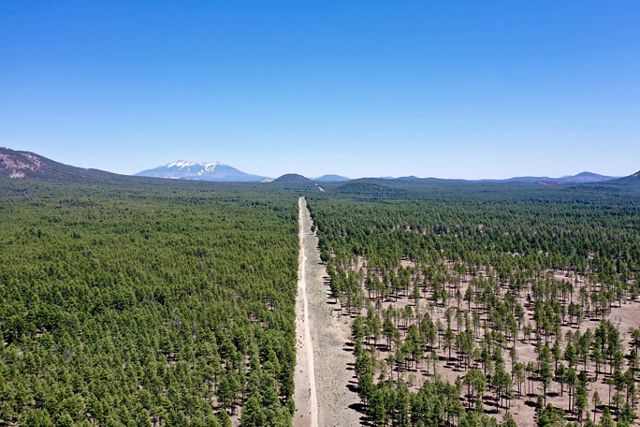
Partners
Our work relies on strong partnerships: government agencies, community leaders, Tribal Nations, affiliated nonprofits and more. We bring a strong science background to help inform best practices and results, additional capacity, as well as develop and implement innovations to increase pace, scale, and quality of comprehensive forest restoration.
-

U.S. Forest Service (USFS)
The primary owner of forested lands in the Southwest region of the United States; TNC is an important implementation partner, bringing added capacity, science, innovation and additional funding to the common objective of restoring forest landscapes.
-
Tribal Nations
Our tribal nations have long been stewards of our forests. In recent years, we have worked together to build on that legacy. Working with both the Hopi and Navajo Nations we have found ways to deploy low-diameter wood for fuel.
-

Local Governments
Our local governmental partners, such as Coconino County Flood Control District and The City of Phoenix, bring additional expertise and funding to our efforts, which further contributes to watershed protection and post-wildfire flooding mitigation.
-
Other affiliated partners
Many other NGOs add collaborative value to forest restoration in the Southwest. We share data and key learnings to accelerate our collective efforts of reducing catastrophic wildfire risk and protecting water, biodiversity and communities.
Our Forest Goals
Our strategies center on innovations and technologies to create efficiencies for forest thinning, impacting state and federal policy, and science that highlights multiple benefits for people and nature.
-
Reduce Risk
Protect vulnerable communities by identifying “opportunity hot spots," or areas to prioritize helps reduce the risk of severe wildfires, and expand restored forested lands to enhance wildfire resilience. Learn more
Join Us!
Learn moreWhat You Can Do
Join The Nature Conservancy in our critically important effort to restore Arizona forests and secure our water future. With your help, we can revive the important services our forests provide to people and nature.
